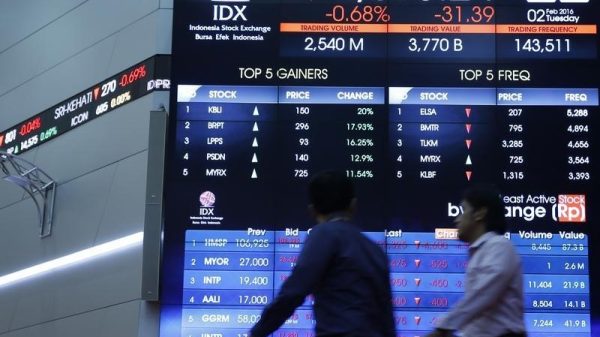By Yoruk Bahceli
LONDON (Reuters) – With a war raging at the European Union’s eastern border, Russia posing a threat, and U.S. President-elect Donald Trump pressuring allies to do more, the bloc urgently needs a viable plan to secure hundreds of billions of euros to bolster its defences.
But while there is broad agreement Europe should be spending more, all potential options – governments boosting their national budgets, joint EU borrowing, or creating a new funding vehicle – come with their own challenges, such as fiscal pressures, political resistance, or funding costs.
The bloc estimates 500 billion euros ($524 billion) of investments are needed in the coming decade, though its new defence chief argues that would only cover an air defence programme.
Andrius Kubilius also said Europe needed to act fast, warning that an EU country could become Moscow’s next target after Ukraine within the next decade.
NATO head Mark Rutte struck a similar note, calling for the alliance, in which most EU countries are members, to adopt a “wartime mindset”, hinting at raising spending from its 2% of output target to 3%, similar to what Trump has been seeking.
Getting there would require spending nearly 200 billion euros per year more for the EU as a whole.
Even a lower target, between 2.5% and 3% would be a “tremendous increase and at the moment, they have not planned for it,” said Dick Zandee, fellow at think tank Clingendael who previously headed planning and policy at the European Defence Agency.
Given many members’ chronically stretched budgets, only Germany among major economies had room to substantially increase its defence spending, economists say.
France is on track to meet NATO’s 2% target, but political turmoil has added to budgetary pressures, leading to a rating downgrade. Spain and Italy are far behind, at less than 1.5%. Poland meanwhile aims to spend twice as much as the alliance’s target, also stretching its budget.
All those countries would benefit from some form of joint funding.
“We have a problem that some member states are more constrained fiscally, and some member states are further away from the military threats, so have much less incentive to pull their weight,” said Sander Tordoir, chief economist at the Centre for European Reform.
“Solving it with common borrowing allows you to provide common security for all.”
POLITICAL, MARKET CHALLENGES
Early diplomatic talks suggest two possible models, both with their own shortcomings.
One would see the EU sell more joint bonds backed by its own long-term budget, in similar vein to its 800-billion-euro COVID-19 recovery fund that hands out grants and loans to member states.
Another early idea is creating a new special purpose vehicle modelled on the euro zone bailout fund, the European Stability Mechanism, to provide loans by selling bonds backed by paid-in and callable capital from countries choosing to participate.
Even proponents of the first option see it as a long shot since it would require approval of all 27 EU members and given Germany’s history of resisting plans for pan-European borrowing. Berlin only accepted the pandemic spending as a one-off exception, and it is far from clear whether election in February will change its stance.
The bloc’s budget also cannot be used to fund defence directly, raising the question of which expenses EU debt backed by the budget could fund. There are also concerns more EU debt
would stretch the bloc’s already tight budget even further.
A new investment vehicle could be more feasible since it would not require unanimous backing. It would also allow non-EU countries to participate, such as Britain or Norway, and the fund’s bonds would not count towards national balance sheets, though loans countries take still should.
But two investors, a trader and a banker said such a vehicle would have to pay higher interest than the EU itself at least initially, having to establish itself as a new borrower.
The EU’s 10-year bond yield at around 2.75% is just under 20 basis points below Spain’s and 30 bps below France’s. The higher funding costs the new vehicle would face would limit the support it could offer.
“It would be just another issuer on the market, not something which really pulls the union together,” said BlueBay Asset Management portfolio manager Kaspar Hense.
He said he would seek 10-20 bps of additional yield over the EU’s bonds.
Some investors could also push back against investing in a borrower dedicated to defence, likely funding weapons, said a banker who runs government bond sales at a large European lender.
NOW OR NEVER?
For all the hurdles, markets see defence spending as a big opportunity to cement the EU as a permanent borrower, furthering European cohesion.
Bonds sales financing the recovery fund have increased the EU’s own debt more than tenfold since 2020, but its appeal has been limited, given the programme’s temporary nature as new borrowing wraps up in 2026.
“If we were to use that structure moving forward … you would expect the cost of funding to reduce over time, just because it’s a permanent structure,” said Simon Bell, portfolio manager at Legal & General (LON:LGEN) Investment Management.
And if fiscal pressures are a reason for common funding, relying on loans only, as a new defence vehicle would do, may limit its impact.
Joint EU borrowing, were it to provide grants, is “different because there’s genuine redistribution,” Centre for European Reform’s Tordoir said, describing defence as a common European good.
“The money goes out the door and it doesn’t have to be repaid by whichever country we give it to.”
































